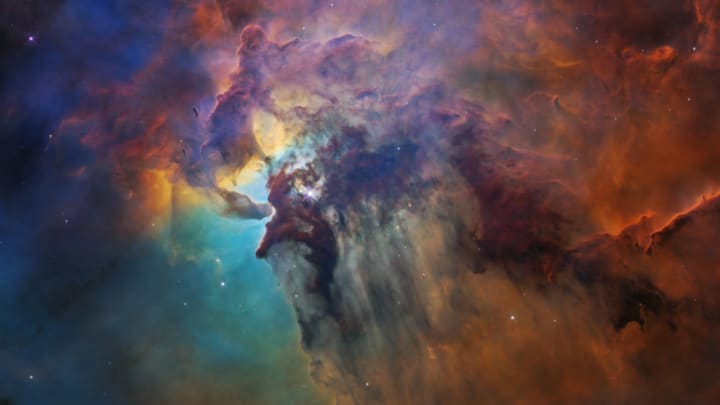Born in 1990, NASA's Hubble Space Telescope could be classified as a millennial. And like many millennials, its mission is to snap envy-inducing photos of its stunning surroundings. (Plus, with 6 million Twitter followers, it doesn't shy away from social media.)
The latest images Hubble captured, released by NASA in celebration of the telescope's 28th anniversary, do not disappoint. In a flyover video, the Lagoon Nebula's phantasmagoric splendor is revealed for all to see. This stellar nursery—an area where gas and dust contract inside a dense nebula, allowing new stars to be formed—is located 4000 light years away from Earth.
The vivid colors captured on camera can be explained by the gases present in those areas. Blue denotes glowing oxygen, yellow is starlight, red is glowing nitrogen, and dark purple is a mixture of hydrogen, oxygen, and nitrogen.
About 30 seconds into the video, a close-up view of one particularly bright star can be seen. That's Herschel 36, a monster star at the "roiling heart" of the Lagoon Nebula. It's only 1 million years old, making it a whippersnapper by celestial standards. NASA estimates it could live for another 5 million years, based on its mass.
What it lacks in age, it makes up for in size and power. It's 200,000 times brighter than our Sun and nearly nine times its diameter. It also generates "powerful ultraviolet radiation and hurricane-like stellar winds, carving out a fantasy landscape of ridges, cavities, and mountains of gas and dust," according to NASA.
Those "curtain-like sheets" you see in the video are the result of massive amounts of radiation and strong winds pushing the dust away.
See below for another view of the Lagoon Nebula. The image on the left was taken in visible light, and the one on the right was taken in infrared light.

